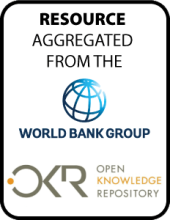Land Library
Welcome to the Land Portal Library. Explore our vast collection of open-access resources (over 74,000) including reports, journal articles, research papers, peer-reviewed publications, legal documents, videos and much more.
/ library resources
Showing items 1 through 9 of 25.By mid-1994, nearly a third (5.7
million) of the entire population of Mozambique had been
uprooted, either internally displaced or living as refugees
in neighboring countries. Rails, roads, and bridges
This report, which has been prepared by
the World Bank in cooperation with the National Statistical
Committee, provides an assessment of poverty in the Kyrgyz
Republic using the most recent data available. The objective
This Poverty report is aimed at improving the understanding of poverty in Ukraine, and providing linkages between growth, the evolution of economic sectors, and poverty.
Over the medium time horizon, skill upgrading, differentials in sectoral technological progress, and migration of labor out of farming activities are some of the major structural adjustment factors shaping the evolution of an economy and its connected poverty trends.
Despite sustained output growth since 1997, low-income Commonwealth of Independent States (CIS) countries (CIS-7) have not experienced growth in employment, a phenomenon observed elsewhere in transitional economies and labeled as "jobless growth." The author addresses the causes of this phenomeno
This paper addresses three areas of the rural labor market-employment, labor wages, and agriculture producer incomes.
The authors assess impacts of rural road
rehabilitation on market development at the commune level in
rural Vietnam and examine the variance of those impacts and
the geographic, community, and household factors that
This paper describes the key challenges
to job creation in conflict-affected environments in South
Asia. It uses household survey data since the early 2000s
for Afghanistan, India, Nepal, and Sri Lanka to document the
Despite their increasing prominence in policy debates, little is known about gender inequities in non-agricultural labor market outcomes in rural areas.

